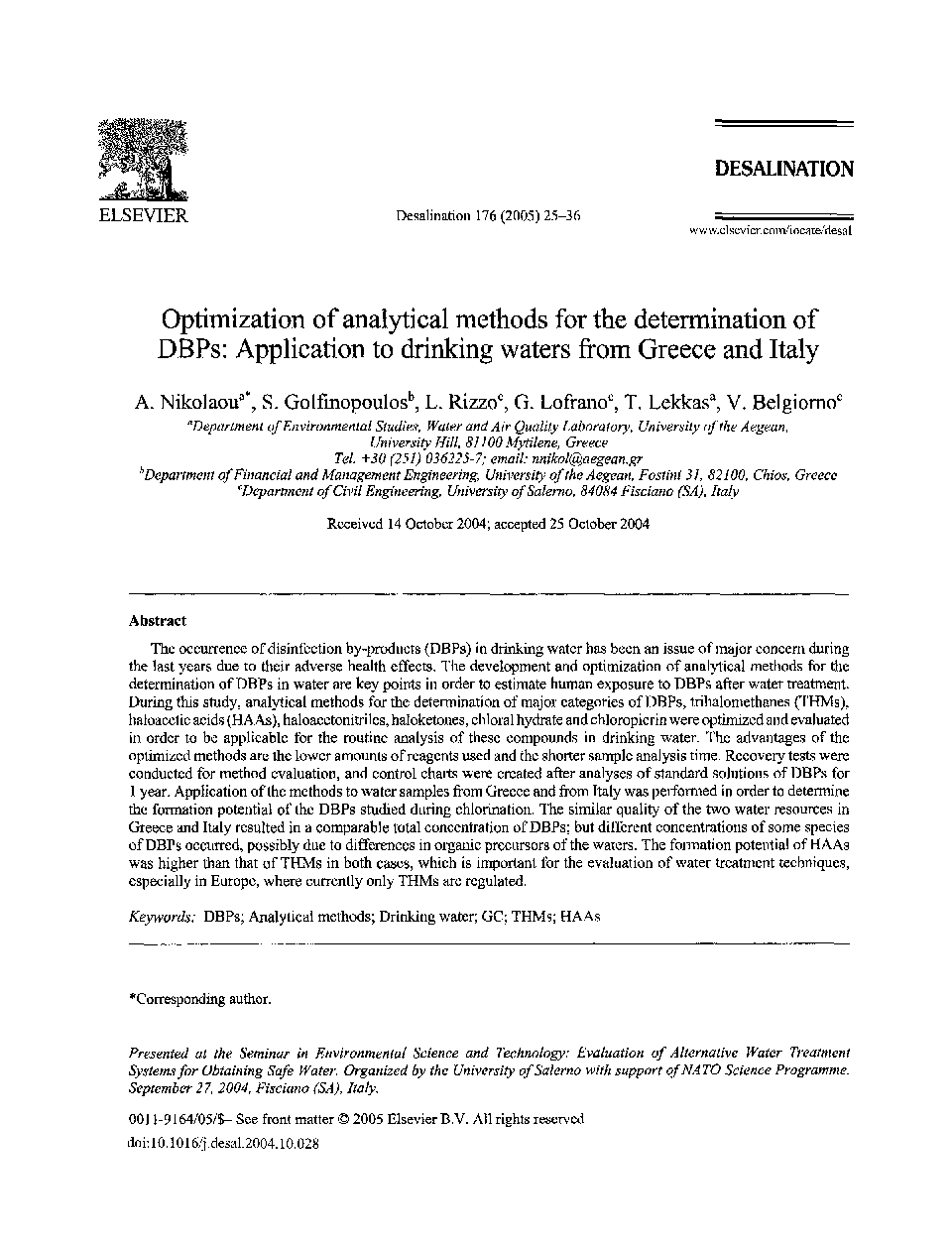| Article ID | Journal | Published Year | Pages | File Type |
|---|---|---|---|---|
| 9681200 | Desalination | 2005 | 12 Pages |
Abstract
The occurrence of disinfection by-products (DBPs) in drinking water has been an issue of major concern during the last years due to their adverse health effects. The development and optimization of analytical methods for the determination of DBPs in water are key points in order to estimate human exposure to DBPs after water treatment. During this study, analytical methods for the determination of major categories of DBPs, trihalomethanes (THMs), haloacetic acids (HAAs), haloacetonitriles, haloketones, chloral hydrate and chloropicrin were optimized and evaluated in order to be applicable for the routine analysis of these compounds in drinking water. The advantages of the optimized methods are the lower amounts of reagents used and the shorter sample analysis time. Recovery tests were conducted for method evaluation, and control charts were created after analyses of standard solutions of DBPs for 1 year. Application of the methods to water samples from Greece and from Italy was performed in order to determine the formation potential of the DBPs studied during chlorination. The similar quality of the two water resources in Greece and Italy resulted in a comparable total concentration of DBPs; but different concentrations of some species of DBPs occurred, possibly due to differences in organic precursors of the waters. The formation potential of HAAs was higher than that of THMs in both cases, which is important for the evaluation of water treatment techniques, especially in Europe, where currently only THMs are regulated.
Related Topics
Physical Sciences and Engineering
Chemical Engineering
Filtration and Separation
Authors
A. Nikolaou, S. Golfinopoulos, L. Rizzo, G. Lofrano, T. Lekkas, V. Belgiorno,
